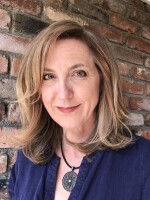With campaigning well underway for many local, state, and federal elected offices, it’s a good time to look back at how Nevada’s political landscape has changed through the years. In this episode of “Time & Place,” historian Alicia Barber takes a close look at Nevada’s seats in the United States Congress.
The number of legislators from each state in the U.S. House of Representatives is, of course, determined by its population, unlike the number of Senators, which is always two per state. But it’s also based on the proportion of the state’s population to that of the rest of the country. So a state can have seats added, but also taken away, if its growth lags behind the others.
The only constants are that each state gets at least one representative, and the total number of voting members of the House of Representatives can’t exceed 435, a number that was set back in 1911.
Attorney Cliff Young ran for Congress in 1952, when Nevada had just one Congressional seat. And that made sense, since at the time, the state’s population was pretty small—just over 160,000 people. And those people were scattered across roughly 110,000 square miles, a pretty vast area.
In a 1999 interview, Young explained how candidates from the same party would team up in caravans to canvass the state in the years before television commercials.

“The Republican caravan would go to Lovelock and the Republican party would have a barbeque and we would be given a chance to speak. And we’d do the same thing in Winnemucca and Elko—and Reno and Vegas. If you got the Republican caravan coming through, it was a good opportunity to see what the horses looked like.”
Young’s main promotional tool was a supply of matchbooks with his name and picture printed on them. And he quickly found that when campaigning for state office, getting his name out there was more important than discussing his specific positions on the issues.
“When I started out campaigning, it might be up in Lovelock or Winnemucca, I’d go to all the bars and go down the stools, shake hands, and pass out my little match folder. More people smoked in those days and everybody liked matches. I’d meet people, introduce myself, and stay away from anything controversial in politics. And I think it was a good technique.”
Apparently, it was. Young won that election and served in Congress for two terms, later serving as a state senator and a Nevada Supreme Court justice.
The number of representatives per state is recalibrated with the census every ten years, and Nevada’s delegation, like its population, has quadrupled over the past four decades. After nearly 120 years with a single seat in the House, the state finally earned a second one in 1982, when it was carved into two districts: one very small but dense district centered around Las Vegas—and a second covering the rest of the state.
The results of the 2000 census brought Nevada a third representative, and just ten years later, with a population hovering around three million, the state earned its fourth. But there’s still a long way to go before catching up with its neighbor to the west. With more than 37 million residents, the state of California currently sends 53 members to the U.S. House of Representatives.
Alicia Barber is a professional historian and author living in Reno. Oral history clips for this segment were provided by the Special Collections Department of the University of Nevada, Reno Libraries.







